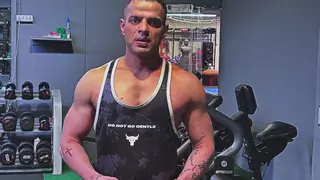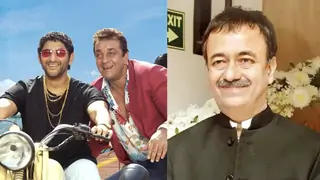Ghazal
Ghazals are not musical compositions - they are basically rhyming couplets following a particular meter. They have neither a raaga nor a taala associated with them. Ghazal is an Arabic word which literally means talking to women. Ghazal originated in Iran in the 10th century A.D. It grew from the Persian qasida, which verse form had come to Iran from Arabia. The qasida was a panegyric written in praise of the emperor or his noblemen. The part of the qasida called tashbib got detached and developed in due course of time into the ghazal. Whereas the qasida sometimes ran into as many as 100 couplets or more in mono rhyme, the ghazal seldom exceeded twelve, and settled down to an average of seven. Because of its comparative brevity and concentration, its thematic variety and rich suggestiveness, the ghazal soon eclipsed the qasida and became the most popular form of poetry in Iran. The ghazal is a poetic form comprising a collection of shers, independent two-lined poems. Thus each couplet, or sher, is a virtually autonomous expression of ideas. However a collection of sher does not necessarily constitute a ghazal. The couplets have to be in the same meter and the lines have to be rhyming. A ghazal is always introduced with a matla, a mono-rhyming couplet (sher) whose pattern is repeated in the closing line of each successive couplet. This couplet was considered in Persian as a single line interrupted by a long pause. Thus a portion of the first line -- comprising not more than two or three words -- immediately preceding the rhyme-word at the end, should rhyme with its counterpart in the second line of the opening couplet, and afterwards alternately throughout the poem. Consider the following ghazal by Wali Mohammad, the father of urdu ghazals. The first line of matla ends with "hai kaam tujh lab kaa" and the second line with a rhyming "hai naam tujh lab kaa". The second lines of all the following couplets not only end with "tujh lab kaa" but have a rhyming word before that - naam, jaam, kalaam, payaam, davaam and shaam.
ruuh baKhshii hai kaam tujh lab kaa
dam-e-isaa hai naam tujh lab kaa husn ke khizr ne kiyaa labarez
aab-e-haivaa.N so.n jaam tujh lab kaa ma.ntaq-o-hikmat-o-maanii par
mushtamil hai kalaam tujh lab kaa rag-e-yaquut ke qalam so.n likhe.n
Khat parastaaN payaam tujh lab kaa sabzaa-o-barg-o-laalaa rakhate hai.n
shauq dil me.n davaam tujh lab kaa Gurq-e-shukar hue hai.n kaam-o-zabaa.N
jab liyaa huu.N mai.n naam tujh lab kaa hai "Wali" kii zabaa.N ko.n lazzat baKhsh
zikr har sub_h-o-shaam tujh lab kaa The opening couplet of the ghazal is always a representative couplet: it sets the mood and tone of the poem and prepares us for its proper appreciation. The last couplet of the ghazal called makta often includes the pen-name of the poet (like wali in the above ghazal), and is more personal than general in its tone and intent. Here the poet may express his own state of mind, or describe his religious faith, or pray for his beloved, or indulge in poetic self-praise. The different couplets of the ghazal are not bound by the unity and consistency of thought. Each couplet is a self-sufficient unit, detachable and quotable, generally containing the complete expression of an idea.
Some poets including Hasrat, Iqbal and Josh have written ghazals in the style of a nazm, based on a single theme, properly developed and concluded. But such ghazals are an exception rather than a rule, and the traditional ghazal still holds sway. However, we do come across, off and on, even in the works of classical poets, ghazals exhibiting continuity of theme or, more often, a set of verses connected in theme and thought. Such a thematic group is called a qita, and is presumably resorted to when a poet is confronted with an elaborate thought difficult to be condensed in a single verse. Although the ghazal deals with the whole spectrum of human experience, its central concern is love.




















1.5k